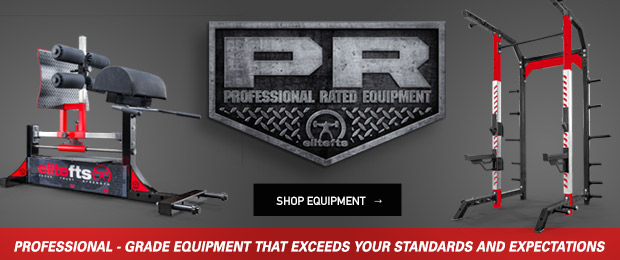
APF Nationals - Michigan June 12
Training
One of the exercises I always seem to stay away from are good-mornings, why? I always feel that the risk-reward was too high, well, having a new mindset during this training block and coming back from the EliteFTS summit I have a different perspective on them. Also, I have never been strong in this movement so I stayed away from it. During warm-ups, I kept telling myself everything was heavy and that "punk ass" mentality started to seep in, all the while my training partner was talking more and more trash cause he was keeping up with me! Build and mechanical advantages and disadvantages aside I zeroed in on the fact that he actually was keeping up with me, I was not gonna have it. Finished our max effort work going one set heavier than I would have if I was solo, I was still safe and I got the work in. Very thankful for training partners talking trash on this training day
Perspective
An article was just posted to Elite talking about the "death of a training crew". It was a great read with lots of positives for the sport but a sad moment realizing that the way I was raised in the sport was dying out. So, me being raised with a crew I do think there will be HUGE lessons missed for individuals that train by themselves. This is one of the reasons I created a powerlifting TEAM (crew) at Illiana Power Asylum (IPA) in Northwest Indiana with My wife Julia Anto. This group is getting strong very quickly and we are trying to show them why a "crew" in powerlifting is needed.
I am going to take this a step further, even the people mentioned in the above article that wears the headphones and in their own world, when they need a spot they always come straight to the team cause they know the IPA powerlifting crew: knows how to spot, gets loud, and makes people work harder. I have been in the scenario to train solo or with one other person, it will always be my LAST resort
Coaching
Max Effort (ME) is to strain right? So do ME movements need to be movements that you are always good at or do they need to be weaknesses, in my opinion, BOTH. This is one of the reasons why, when running the conjugate system, you need to run it several times to see what actually is a strength and weakness from an exercise prescription standpoint. One, "8-week strength block" will not give you enough feedback to understand what works and does not. Even a seasoned coach needs more feedback to properly structure your next round to develop you properly.
So, what I have started doing with online clients, after I get their check-ins, if the actual check-in, I will go to their program and make a note (strength or weakness) to keep in their log so when we transition into our next strength block I can use them as testers or builders and put weaknesses further out from the meet than strengths. If I build weaknesses then their ME movements that were strengths should become better, right? This then has the ability to become a tester, I can find how much a movement (strength) correlates to their competition lift. Now you have built a structure for that client (or yourself) in the conjugate system to have data of where they are at without taking a max competition lift.
1- Mark Down whats "hard and easy"
Hard - weakness Easy - Strength
2- AFTER your strength block (meet) review them and in preparation for your next block move weaknesses further from meet and strengths closer to meet
3- After Block REVIEW AGAIN and see if those "strength lifts" were higher this block and correlate it to your competition movement
4- you now have a tester in the conjugate system for yourself
Training
Day 1
- SSB Good Morning off pins Max Single: 455
- SSB Comp Stance, BELOW PARALLEL, box squat 3x8: 315 NO BELT
- SSB RB Good-Mornings Over GHR 3x20: 115,115,135
- SSB Split Squats 3x12 each leg: 65,85,105
- Barbell Landmine Single Arm Rotation to press 3x10: 55









